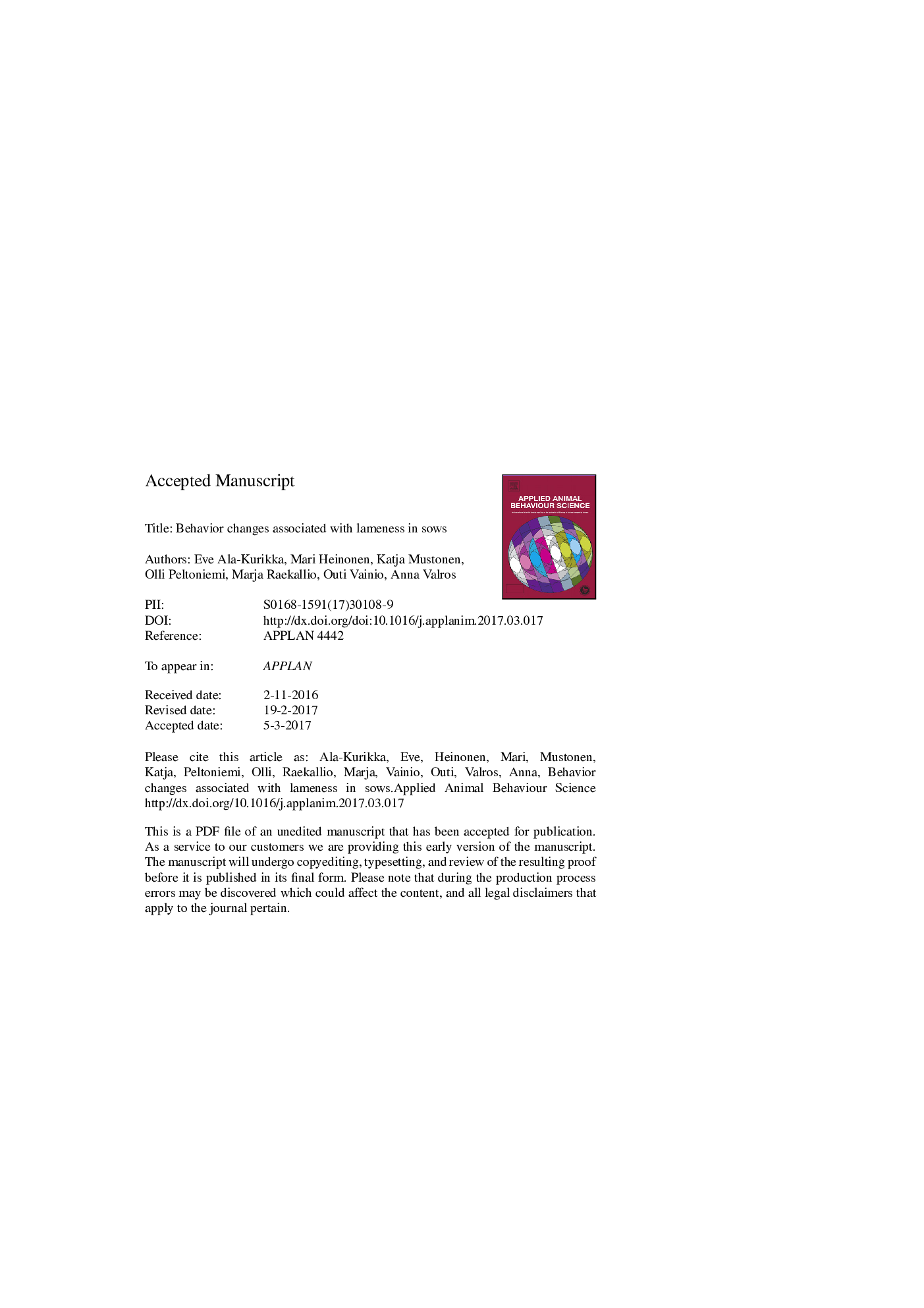| Article ID | Journal | Published Year | Pages | File Type |
|---|---|---|---|---|
| 5763397 | Applied Animal Behaviour Science | 2017 | 20 Pages |
Abstract
Lameness is a common health and welfare problem in sows. Little has been published about behavioral changes in lame sows. Ketoprofen is an effective non-steroidal anti-inflammatory drug used to treat non-infectious locomotor disorders in pigs. The aim of this study was to determine the effect of lameness and lameness-related pain on the behavior of sows. To evaluate this effect, we studied whether pain alleviation with ketoprofen and clinical relief of lameness were associated with changes in behavior. We allocated randomly 13 lame, early pregnancy sows in three treatment groups receiving either ketoprofen 4Â mg/kg, ketoprofen 2Â mg/kg (these two groups were pooled for statistical analyses) or placebo. The animals were treated orally for 5Â days and lameness scored before and on the last day of the treatment. Lameness was assessed with a 5-grade scoring system and behavior by scan sampling method. A clinically healthy, non-lame control sow was paired with each lame sow and they were examined the same way as lame sows but received no treatment. Lame sows were more passive, they lay more and stood and explored pen fixtures less than the control sows before treatment. After 5-days treatment, placebo-treated sows were in contact with the wall and lying more often when compared to control sows. Ketoprofen-treated sows were more seldom in contact with the wall and exploring bedding more often than placebo-treated sows. Placebo sows tended also to move and explore bedding less than control sows. Lameness had been relieved in altogether 7 out of 13 sows on day 5: six out of nine ketoprofen-medicated sows and one out of four placebo-treated sows. The behaviour of sows with relieved lameness did not differ from that of control sows on day 5. Sows with non-relieved lameness were in contact with the wall and lying more and moving and standing less than control sows. When compared to control sows, sows with non-relieved lameness tended to be more passive. When compared to sows with relieved lameness, sows with non-relieved lameness showed a tendency to be in contact with the wall more often. Our study showed that lameness reduces the activity of sows and affects their position in the pen. Passive behavior seemed at least partly be due to pain and lameness relief was associated with normalization of the behavior.
Keywords
Related Topics
Life Sciences
Agricultural and Biological Sciences
Animal Science and Zoology
Authors
Eve Ala-Kurikka, Mari Heinonen, Katja Mustonen, Olli Peltoniemi, Marja Raekallio, Outi Vainio, Anna Valros,
